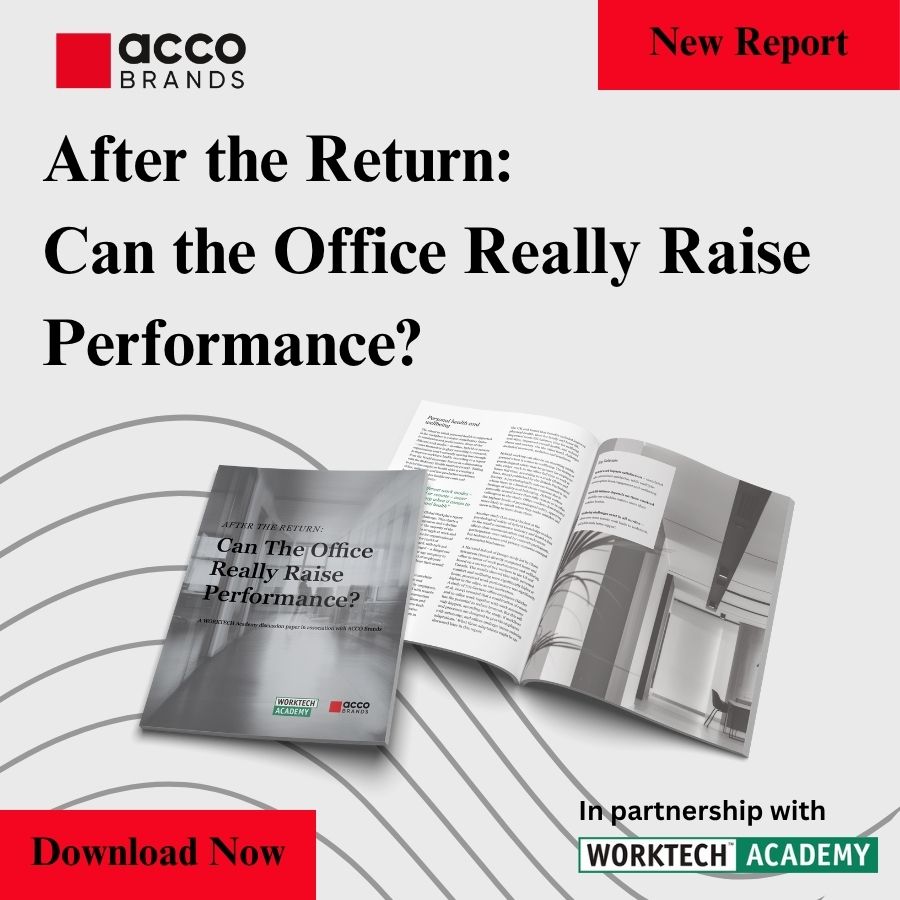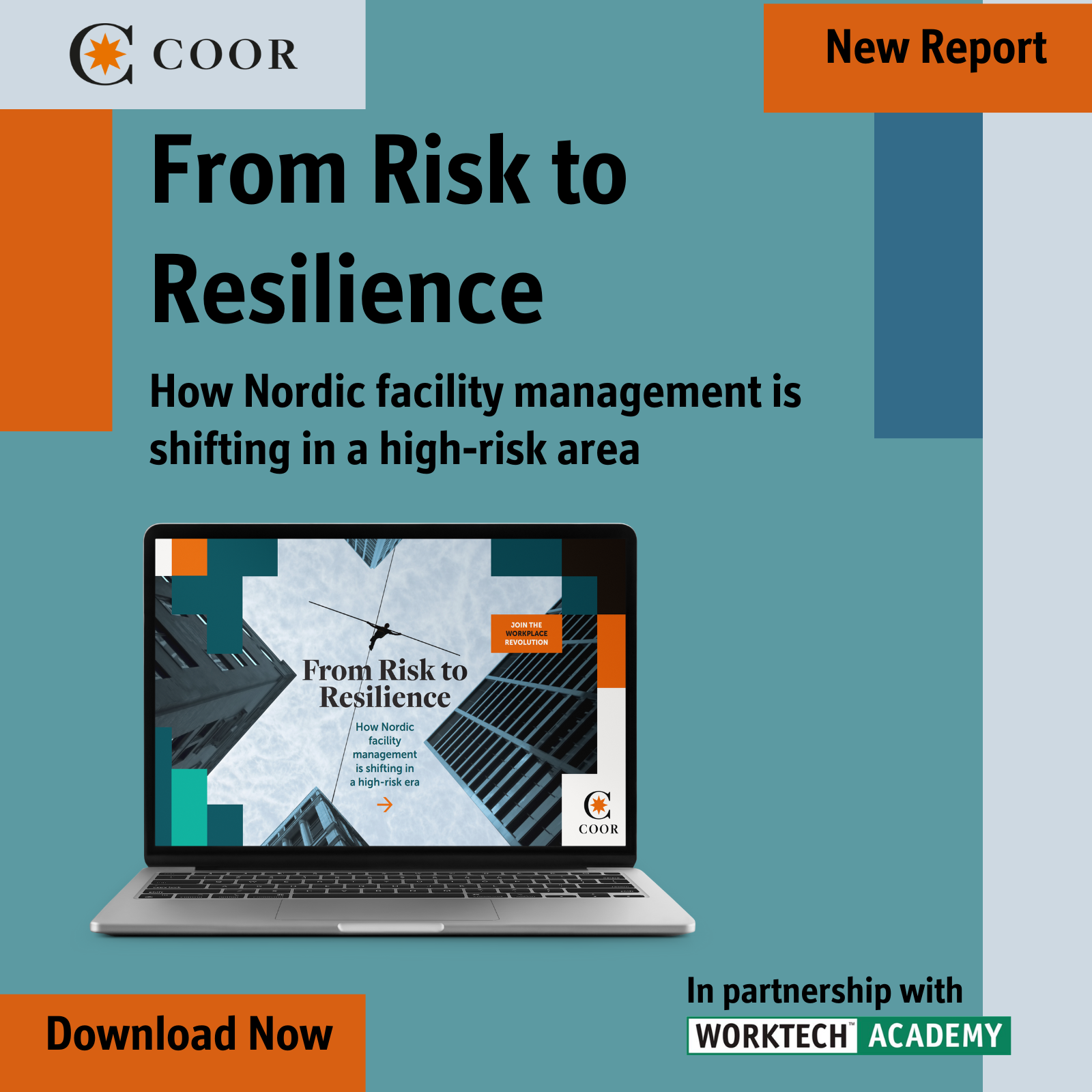Zurich zeitgeist: tech setting the pace, but people are leading the way
From managing the pace of change to plugging the skills gaps, the WORKTECH Zurich 2025 conference focused on how global organisations can prepare for future disruption
Zurich might be a relatively small city, but when it comes to workplace innovation it punches well above its weight. On Thursday 25 September, Microsoft Switzerland hosted WORKTECH in Zurich at its campus next to the airport. Over the course of the day experts shared research and case studies on how AI is reshaping work, the talent market is tightening, meeting rooms are being reimagined, and the workplace itself is having to prove its value.
There was something fitting about hosting a future-of-work conference with the runway of Zurich Airport as your backdrop. Planes constantly taking off and landing felt like a metaphor for the conversations at WORKTECH Zurich: global, fast-paced, and full of momentum. One of the defining messages of the day was that technology is certainly setting the pace of change, but people and their experiences remain firmly in the driving seat.
Something has to give
Microsoft’s Hrvoje Klapan opened the conference with a stark reality check. Microsoft’s data highlights a growing gap between leaders and employees, where 80% of workers feel too stretched to take on more work, while over half of leaders are being told to squeeze more productivity out of them. Something has to give. For Microsoft, the answer is AI agents. By 2028, Microsoft predicts 1.3 billion of AI Agents will be at work alongside us.
AI Agents are digital assistants that streamline everything from customer service to cybersecurity autonomously behind the scenes – without human prompts. Microsoft calls the early adopters ‘Frontier Firms’.
But Ralf Buchsenschuss of Microsoft offered the reminder that while 60% of jobs will be touched by AI, most people don’t yet have the skills to use it effectively. His call was to rethink work not as a list of tasks, but as a set of skills – and he highlighted Microsoft’s new ‘People Skills’ feature as a bridge to overcome the growing skills gap.
The great talent squeeze
Staying on the talent theme, Orsolya Kovacs from Boston Consulting Group widened the lens. ‘We’re not running out of work,’ she said, ‘but we are running out of talent.’ Between ageing populations, skills mismatches, and workers becoming choosier, the labour market is tightening in uncomfortable ways.
Gen Z are demanding roles that keep them employable long-term, not just secure in the here and now. This is putting pressure on organisations to upskill and invest in learning and development for employees. Currently, more than half of firms now invest in reskilling. But Kovacs argued it needs to be much more focused, especially on business-critical areas where shortages are biting hardest.
Measuring what really matters
A panel moderated by workplace change consultant Susannah Burock focused on another area where change is out of sync with the workplace: how we measure workplace success. Too often, organisations obsess over how full their offices are, or how efficient their space is, when what really matters – engagement, wellbeing, cognitive flow – goes unmeasured.
Stefan Hofmann from Beyond Gravity made the case for shifting mindset from ‘what can we cut?’ to ‘what can we do?’. Deutsche Bank’s Antonio Brunner shared that they now measure the gap between mandated office days and actual attendance as a proxy for how well the workplace is performing. It’s not perfect, but it tells you more than a headcount.
Organisations already sit on mountains of data, but they rarely know how to use it. If people are the biggest asset, why is space the only thing we measure?
Standardising meeting rooms
Sometimes the most relatable stories are the most powerful. UBS’s presentation on how it has measured the success of its meeting rooms resonated strongly with the WORKTECH Zurich audience. UBS looked at the effectiveness of internal meeting rooms in its buildings and found that these spaces were both underused and not used for their purpose.
By interrogating the problem through a set of 10 principles of employee engagement – from listening to user journeys to technology choices – UBS found that most four-person rooms were being used by two people and sat at just 20% occupancy. Sensors told part of the story, but employee feedback revealed the bigger issue that people wanted more privacy and better on-demand availability.
The solution was four standardised designs that marry simplicity with digital equality. UBS resisted the urge to chase every shiny new tool on the market and instead focused on technology that just works, every time. The result was a five-year business case which projected USD $10 million in savings through better productivity and smarter use of space.
The office has to earn its place
Claire Ward from SPS highlighted the pace of change we are currently facing and how the workplace is struggling to keep up. She opened her presentation with the statement: ‘Work has changed, but the workplace hasn’t moved on.’ The office, she argued, has to work harder to justify its existence, because productivity is no longer tied to place.
Ward used the analogy that remote working without policies is like sheep in a boundless field – paralysed by too much freedom, clustering nervously in the middle. With a fence, they roam freely. Hybrid work, she suggested, needs guiderails.
Towards digital identity
A panel led by SwiftConnect’s James Kendall explored how access to spaces and buildings is being reimagined beyond security – instead becoming an experience driver. Credentials are going digital, security is fading into the background (although still important), and interoperability is becoming the real game-changer. The panel discussed scenarios such as booking a meeting room in one building and automatically receiving access credentials for the right floor and space.
Co-created workplaces
Two case studies highlighted the importance of co-creating workplaces with employees to ensure they meet expectations to increase engagement. Dormakaba’s Swiss HQ was designed around the motto ‘every user needs a small town’. The workplace is carved into neighbourhoods, complete with a marketplace, arena, and even a barista bar staffed by employees. Change management was as important as the design itself, with ambassadors and clear guidelines helping people adapt.
SAP’s new Milan office, co-designed with e45 architects, took a similar angle. It’s a LEED and WELL certified hybrid space shaped through employee workshops. The team created equal space dedicated to communication, concentration, connection and creativity. As SAP’s Mauro Giovenzanna reminded us with a Steve Jobs quote, ‘If you want to make everyone happy, sell ice cream.’ The goal wasn’t universal approval, but a workplace that genuinely works for diverse needs.
‘Tech is setting the pace, but workplace experiences will define the outcomes…’
Susannah Burock closed the day with a line that tied everything together, ‘Tech is setting the pace, but workplace experiences will define the outcomes.’ While the physical workplace may not currently be keeping pace with wider technological and social changes, WORKTECH Zurich highlighted the foundational work being done to help shape a workplace that is more resilient to future disruption.








